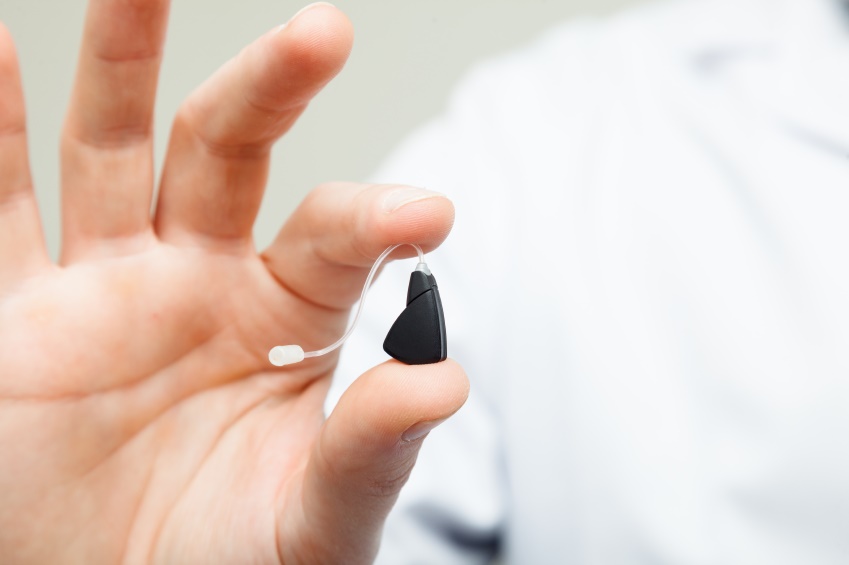
Hearing aid guides are not rare, but most are not quite reader-friendly, either. Most are simply too lengthy or complicated, creating more perplexity instead of less.
My guess is that you’re much less interested in the physiology of hearing or in the intricacies of acoustical engineering and much more interested in obtaining the most appropriate technology at a reasonable price. Your objective is to hear better, not to read a 20-page manual.
If that represents you, then you’ll benefit from this concise guide to hearing aids. We’ll cover four brief sections, and when we’re finished, you’ll be set to work with your hearing care professional to find the technology that’s right for you. Let’s get started.
How All Digital Hearing Aids Work
Choosing a hearing aid can seem overwhelming—there are several brands and seemingly never-ending considerations. But it’s really not as complex as it appears. As you move through this guide, bear in mind that all digital hearing aids work essentially the same way, and consist of these four basic parts:
- The microphone picks up environmental sound and sends it to the digital processor.
- The digital processor modifies the sound signal based on the settings programmed by the hearing specialist. The modified sound signal is then transferred to the amplifier.
- The amplifier increases the volume of the sound according to the programmed settings, amplifying only the frequencies the person has difficulty hearing (while suppressing background noise). This signal is then transmitted to the speaker.
- The speaker delivers the enhanced sound to the ear, producing louder, clearer sound.
Additionally, all hearing aids include a battery, volume and setting switches, and remote controls.
Hearing aids really only differ in two very important ways: 1) style, and 2) advanced features. We’ll address these in the next two sections.
Hearing Aid Styles
You have your choice of three primary styles:
1. Behind-the-ear (BTE) hearing aids hook over the top of the ear and rest behind the ear. The case is then fastened to an earmold in the ear canal by a piece of clear tubing. BTE hearing aids are easy to handle and maintain, typically have a longer battery life, and can manage severe hearing loss.
2. In-the-ear (ITE) hearing aids occupy the outer part of the ear with a custom-molded shell. ITE hearing aids are smaller than the behind-the-ear hearing aids but larger than the in-the-canal styles. This renders ITE hearing aids easier to handle than the smaller styles but less visible than the BTE style.
3. In-the-canal (ITC) hearing aids and completely-in-the-canal (CIC) hearing aids fit partially or entirely within the ear canal, making them almost or entirely invisible. ITC and CIC hearing aids are custom molded to the curves of the ear, and some can be worn for several months at a time.
When choosing a style, take into account the tradeoffs among simplicity of use, battery life, and concealment. Your hearing care expert will help you prioritize your preferences and find the best suited style.
Hearing Aid Advanced Features and Accessories
After you’ve chosen the most suitable style, you can figure out which of the following features you need—and which you don’t.
- Directional microphones enable you to concentrate on the sounds and conversations directly in front of you while reducing the disruption of loud background noise.
- Telecoils, or T-coils, allow you to talk on the phone while decreasing the static brought on by background noise.
- Environmental noise control allows you to optimize hearing based upon your environment, for instance in a quiet room at home versus in a bustling restaurant.
- Direct input to sound sources such as TVs, radios, computers, and music players allow for clear sound without background noise.
- Wireless connection to mobile phones converts your hearing aids into top-quality wireless headsets. The hearing aid settings can be regulated from your phone (or digital watch), and sound can be wirelessly streamed directly from the phone to the hearing aids.
Optional accessories include cleaning kits, storage cases, ultraviolet sanitizers, battery-changers, and more. Your hearing care professional can help you decide which hearing aid accessories you may need or want.
Selecting the Right Hearing Aids
Before making an investment in hearing aids, take these four steps:
- Find a reputable, local hearing care professional. Only professionals with sufficient experience can evaluate your hearing accurately, which is vital for when it comes time to program, fit, and calibrate your hearing aids.
- Discuss hearing aid styles and advanced features. Your selection of hearing aids will depend on your preference of style and functionality. Discuss these two variables with your hearing specialist and your options will become manageable.
- Develop a budget. Some would state that your hearing is priceless, but that doesn’t imply you have an unlimited budget. With all of the hearing aid options available to you, you and your hearing professional can uncover the right hearing aid at a reasonable price.
- Test drive your new hearing aids. inquire about trial periods and test out your new hearing aids. Work with your hearing specialist to set sensible expectations and give your hearing aids an opportunity to work. Your patience will be paid back when you recognize the difference better hearing will make in your life.
And that’s it. What might appear to be a complex process is in truth easily workable, once you know how to prioritize your needs and constrict your choices. With the assistance of your local hearing care professional, you can find the ideal technology at the right price—so you can start experiencing all of the advantages of better hearing.
